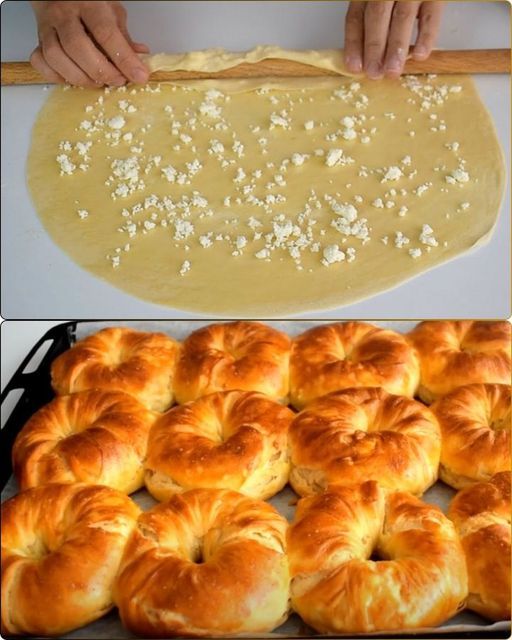
Instructions:
- Activate the yeast: In a small bowl, combine the warm milk, sugar, and yeast. Stir well and let the mixture sit for 5-10 minutes until it becomes frothy. This step is crucial for ensuring the dough rises properly.
- Prepare the dough: In a large mixing bowl, combine the flour and salt. Add the activated yeast mixture, eggs, melted butter, and vanilla extract to the flour mixture. Mix well to combine. Knead the dough for 10 minutes on a floured surface until it becomes smooth and elastic.
- Let the dough rise: Transfer the dough to a greased bowl and cover it with a clean kitchen towel. Allow the dough to rise for 1 to 1.5 hours, or until it doubles in size. The yeast needs time to work its magic, creating the soft, airy texture of the doughnuts.
- Shape the doughnuts: After the dough has risen, punch it down to release the air. Roll the dough out onto a floured surface to about 1/2 inch thickness. Using a round cutter, cut out circles. For traditional Hungarian doughnuts, a small circle is cut out from the center to create a hole. Let the doughnuts rest for 15-20 minutes.
- Heat the oil: Heat 2 inches of vegetable oil in a deep pan or large pot to 350°F (175°C). The oil needs to be at the right temperature for frying—too hot and the doughnuts will burn, too cold and they will absorb too much oil.
- Fry the doughnuts: Carefully drop the doughnuts into the hot oil, frying them in batches to avoid overcrowding. Fry for 2-3 minutes per side until golden brown and puffed. Use a slotted spoon to remove the doughnuts and place them on paper towels to drain excess oil.
- Dust with powdered sugar: While the doughnuts are still warm, dust them generously with powdered sugar. You can also fill the doughnuts with jam or chocolate spread at this stage, using a piping bag or injector.
- Serve and enjoy: Serve the doughnuts warm, and enjoy the fluffy, sweet, and crispy goodness that is characteristic of Hungarian szalagos fánk.
Variations of Hungarian Doughnuts
While the classic szalagos fánk is delicious on its own, there are many variations and additions that can make this treat even more delightful.
- Filled Doughnuts: As mentioned earlier, you can fill the doughnuts with different fillings, such as fruit jam, custard, or chocolate spread. Raspberry, apricot, and strawberry jams are traditional choices in Hungary, but you can get creative with your own preferences.
- Cinnamon Sugar: For an added twist, you can coat the fried doughnuts in a mixture of cinnamon and sugar, creating a spiced coating that complements the sweetness of the dough.
- Glazed Doughnuts: If you prefer a shiny, sweet finish, you can dip the doughnuts in a simple glaze made from powdered sugar and water or milk, adding a deliciously sweet coating.
Conclusion
Hungarian doughnuts, or szalagos fánk, are much more than just a tasty treat—they are a symbol of Hungary’s rich culinary tradition and hospitality. Whether enjoyed at a fair, during a festive holiday, or at a family gathering, these doughnuts bring people together and provide a taste of Hungarian culture. The simple ingredients and steps involved in making them make the recipe accessible to anyone looking to try their hand at Hungarian baking. The light, fluffy texture, paired with the rich flavor, makes szalagos fánk a treat worth trying. So, the next time you’re in the mood for something sweet, indulge in these delightful doughnuts and savor a bit of Hungarian history with every bite.